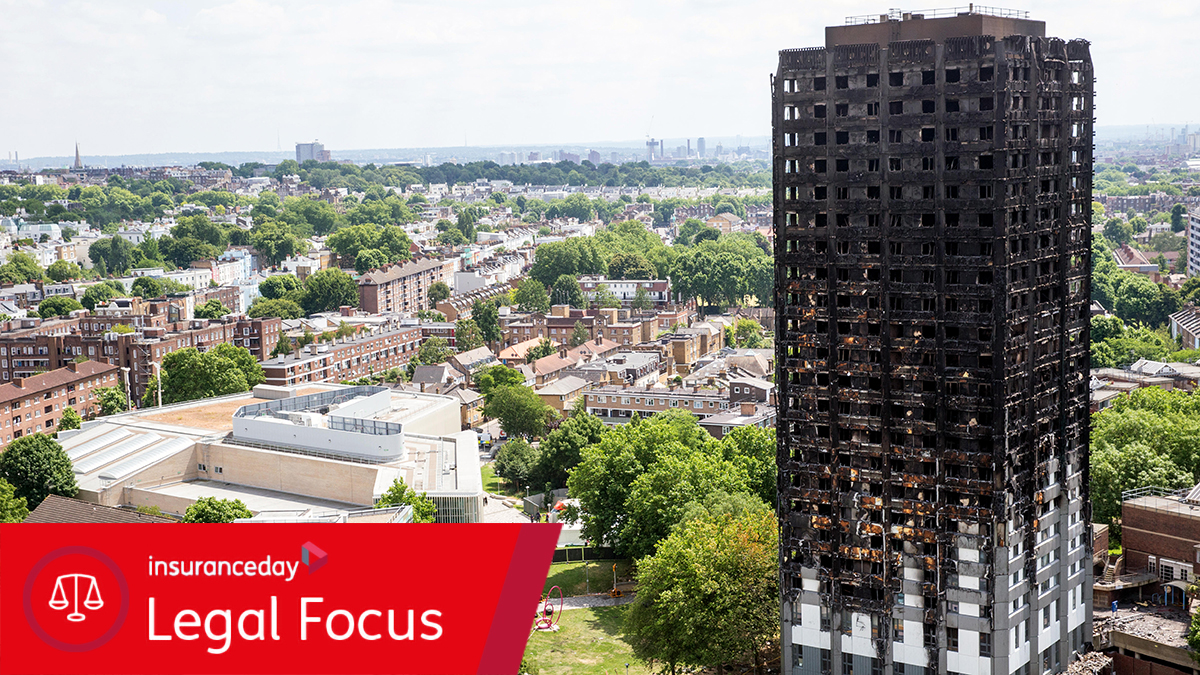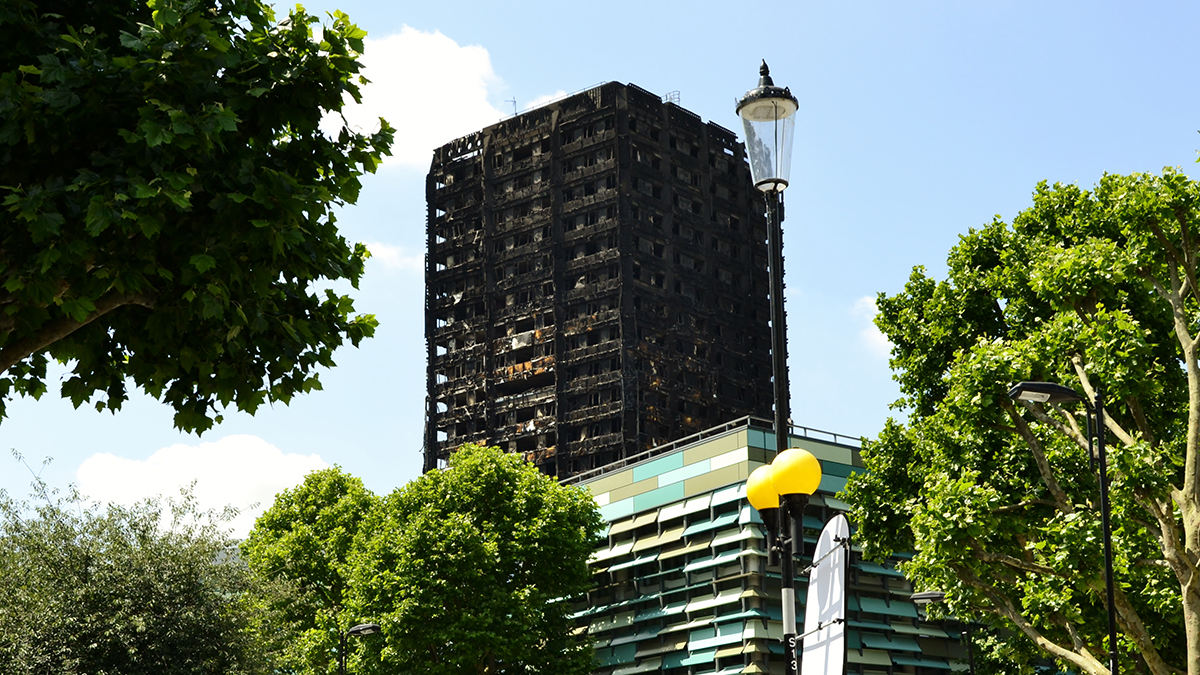Legal Focus: New Building Safety Act will have an impact on professional indemnity cover
Introduction of dutyholder regime is about accountability and where there is accountability for errors and omissions, professional indemnity claims and directors’ and officers’ claims will follow
The legislation, which is expected to come into force by October 2023, imposes greater obligations on designers, contractors and building control bodies and will have implications for their insurance cover
The tragic fire at Grenfell Tower in London and the resulting independent review led to huge changes to the UK’s building industry and the availability and cost of professional indemnity insurance for those who work in it.
The government has introduced new legislation in the form of the Building Safety Act, which received royal assent in April 2022. The majority of the act is expected to be in force by October 2023, although much of the detail is still to be set out in secondary legislation not yet finalised.
Most importantly, it delivers wide-ranging changes setting out a pathway on how buildings should be constructed, maintained and made safe. The cumulative effect is it also imposes greater obligations on designers, contractors and building control bodies, which will have an impact on their professional indemnity cover.
The act sets out a new dutyholder regime, which places the responsibility and safety of higher-risk buildings on key individuals. They are responsible for providing information (the golden thread) and maintaining the building to demonstrate compliance with building regulations. The dutyholder regime will be in place for the whole lifecycle of higher-risk buildings and goes hand in hand with the act’s “gateway regime”.
New regulator
The government has created a new building safety regulator (BSR), which sits within the Health and Safety Executive and will oversee compliance and enforcement of the new regime. The act provides the BSR will have wide-ranging enforcement powers over dutyholders. Breaches of the Building Act and the Building Safety Act will constitute offences with fines and sentences of up to two years imprisonment if convicted.
The government has made no secret of the fact the introduction of the dutyholder regime is about accountability. Where there is accountability for errors and omissions, professional indemnity claims and directors’ and officers’ claims will undoubtably follow. Consideration of cover will no doubt start with any intervention by the BSR.
On typical professional indemnity wording there may be cover for defence costs involved in responding to BSR intervention in the following circumstances: the policy has investigation costs cover; the policy covers the costs of criminal proceedings; the policy covers representative costs; and the policy provides for mitigation costs cover.
Cover for investigation costs is reasonably unusual under a current professional indemnity policy and cover for the other three situations is typically tied to the likelihood of a civil claim (as defined under the policy) arising. We consider it is reasonably likely if a dutyholder is found to be in breach of the new building regulations, they will also be in breach of contract (an express or implied duty to exercise reasonable skill and care), so a civil liability claim may arise. However, the likelihood of a such a claim arising will not always be easy to assess and will undoubtedly depend on the type of breach alleged and the extent of intervention by the BSR.
We consider it is reasonably likely if a dutyholder is found to be in breach of the new building regulations, they will also be in breach of contract (an express or implied duty to exercise reasonable skill and care), so a civil liability claim may arise
The BSR’s approach to enforcement will be set out in an enforcement policy statement. One observation, however, is the purpose of the BSR being involved throughout the gateways is to achieve a collaborative approach with information and instruction going back and forth between the BSR and dutyholders. After collaboration, the BSR may issue “informal advice” before any formal notice or investigation is undertaken.
Such interaction with the BSR is unlikely to trigger policy response under the typical extensions cited above because no investigation, criminal proceeding or official enquiry has been instigated. The key coverage consideration in these relatively early stages of intervention will be whether and when mitigation costs might be triggered.
Even if there is no mitigation costs cover, insurers may nonetheless consider it better to assist insureds in these early stages to mitigate the likelihood of a civil claim arising, but that will be highly fact-specific.
Coverage disputes
Notification of a circumstance in relation to BSR interaction is likely to generate coverage disputes in the future. With such close scrutiny of design and construction throughout the life cycle of higher-risk buildings, there will be a sizeable paper-trail of documentation for insurance claims handlers and their coverage solicitors to review in the event a claim is made.
Whether any BSR communication warranted earlier notification under a professional indemnity policy may also generate future coverage disputes. Similarly, in cases where notification is made to an expiring policy, whether such a notification is accepted as valid will no doubt fuel disputes. The difference between notification of circumstances that “may” as opposed to being “likely” to give rise to claims will be a key consideration in such instances.
Although there may be defence costs cover for BSR invention, whether there will be any appetite for professional indemnity policies to provide full or restricted cover for costs imposed by the BSR remains to be seen.
The Defective Premises Act 1972 applies to all dwellings in England and Wales. It enables owners and anyone else who has a legal or equitable interest in a property to pursue a claim for defective work, where the work renders the dwelling unhabitable. The Building Safety Act introduces some key changes to the provisions of the Defective Premises Act to expand its scope to include refurbishment and to extend the limitation periods to 30 years retrospectively and 15 years prospectively.
The obvious concern for design and construction professionals and their professional indemnity insurers is the type of work that is subject to the duty under the Defective Premises Act has been significantly expanded. Furthermore, the Building Safety Act’s amendments to section 1 of the Defective Premises Act mean proceedings can now be pursued for claims under the Defective Premises Act that were previously considered statute barred.
A particular concern for professionals and professional indemnity insurers will be the associated problems caused in defending claims that are being pursued on the basis of works that were undertaken a long time ago – for example, relevant personnel or documents may have been lost. In addition, there may be problems with pursuing third parties, if they still exist, for contribution claims based on contract, where the limitation period is six years.
Unfortunately, much like everything associated with the myriad of expansive changes coming into force in relation to building safety, their impact and interpretation will not be fully understood until the claims and court cases start materialising.
However, despite the slow and prolonged progress towards enforcement and application, it should be acknowledged the BSR, along with complementary legislation, will ensure safety and improvements in standards of construction will be at the forefront of the British construction industry’s planning. Insurance considerations should also be a key part of this “new” thinking.
Joanna Lewis and Michael Salau are partners at Beale & Co, a member of Global Insurance Law Connect

